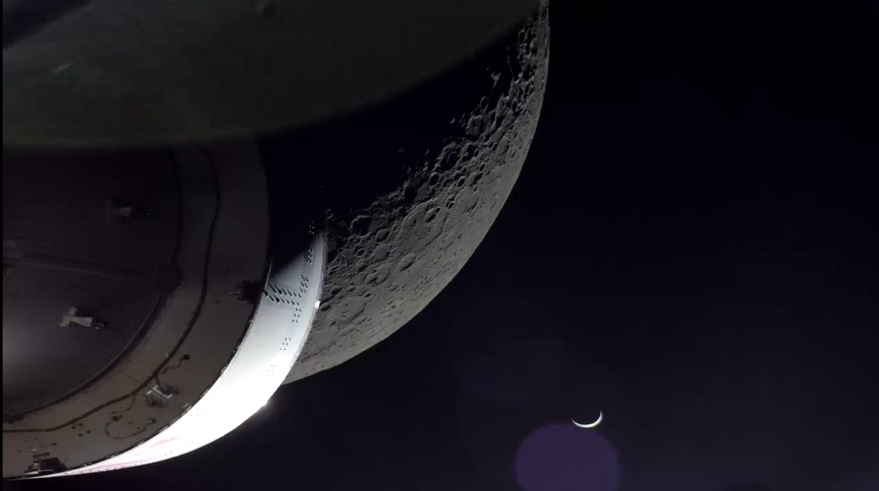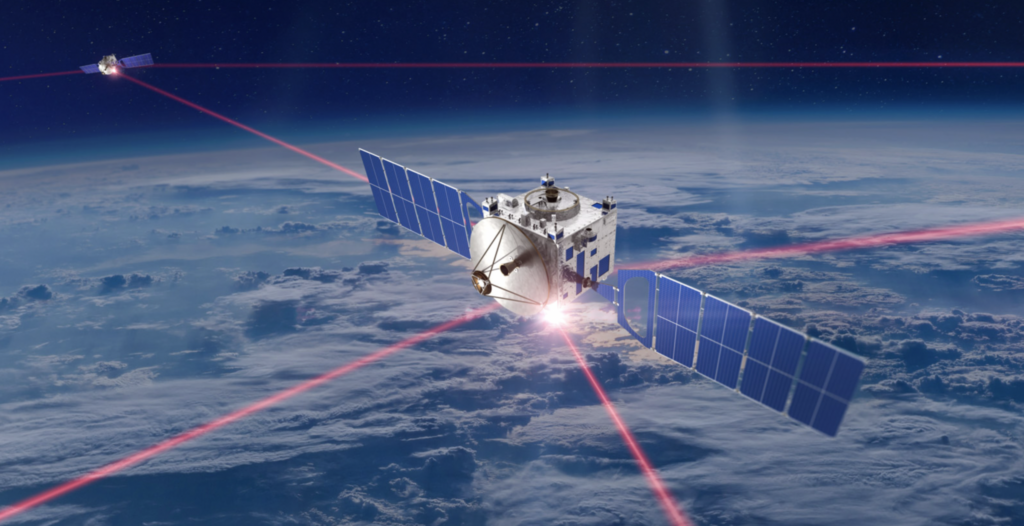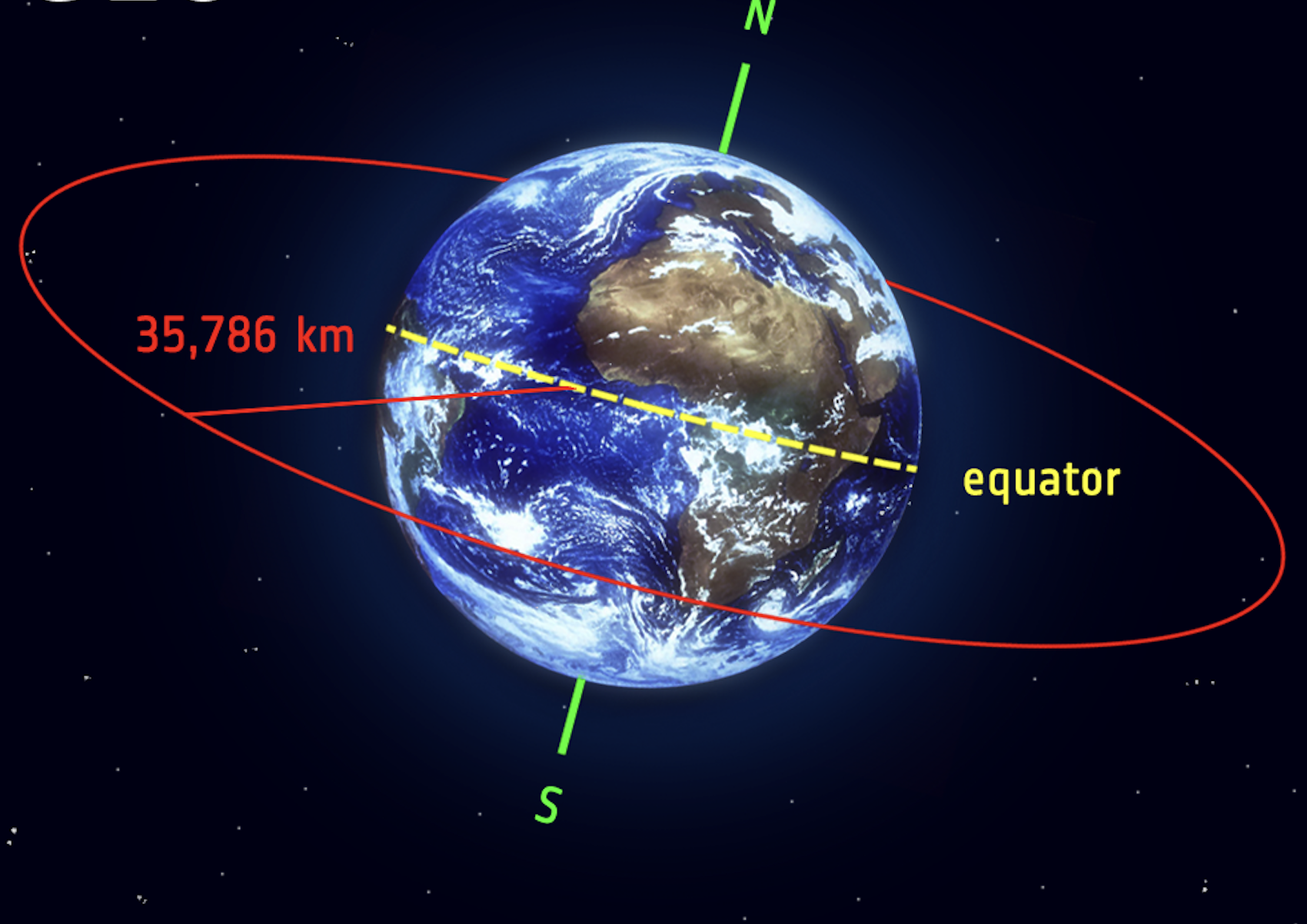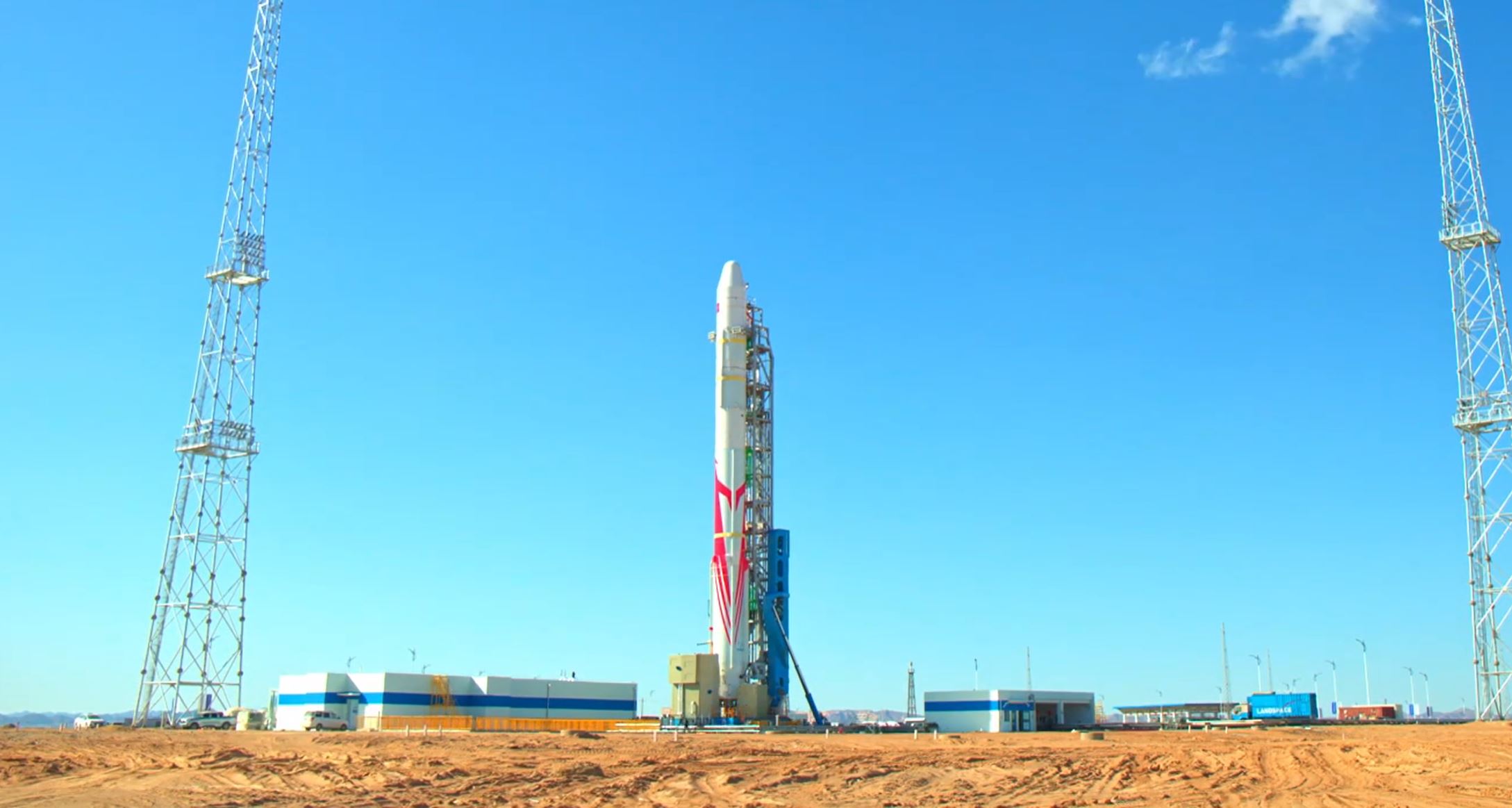Orion swings by the moon on its way back to Earth
Original Publication Date: 2022-12-06 10:14

NASA's Orion spacecraft flew by the moon for a second and final time Dec. 5. The maneuver sets up the spacecraft for a splashdown in the Pacific Ocean in six days. Orion, which launched nearly three weeks ago, continues to perform well with only minor problems.
E-Space buys RF hardware developer CommAgility
Original Publication Date: 2022-12-05 14:26

E-Space said Dec. 5 it plans to buy radio frequency module developer CommAgility. CommAgility specializes in systems that manage signals for cellular, air-to-ground, and satellite networks. E-Space plans to integrate CommAgility’s source code into a network of potentially hundreds of thousands of satellites.
Mynaric, Redwire, BigBear.ai partner for DARPA’s laser communications program
Original Publication Date: 2022-12-07 00:35

Mynaric selected a cybersecurity tool from Redwire and BigBear.ai. Redwire-BigBear.ai cybersecurity technology uses artificial intelligence and machine learning. Mynaric is designing an optical communications terminal for DARPA’s Space Based Adaptive Communications Node program known as Space-BACN.
Space Force procurement chief emphatic about the ‘need for speed’
Original Publication Date: 2022-12-06 23:32

Frank Calvelli is assistant secretary of the Air Force for space acquisition and integration. He laid out nine space acquisition tenets in an Oct. 31 memo. Calvelli encouraged space startups to continue to innovate. He said traditional contracts where the government bears the risks and pays for cost overruns will no longer be acceptable.
Mangata Networks gets funds for Scottish satellite manufacturing hub
Original Publication Date: 2022-12-06 22:58

Mangata Networks signed a $100 million financing deal to build a manufacturing facility in Scotland. The facility at Prestwick International Aerospace Park will also serve as Mangata’s engineering and operations hub. Mangata aims to start deploying nearly 800 broadband satellites from late 2025.
Defense, Commerce Departments select companies to prototype space traffic management solutions
Original Publication Date: 2022-12-06 21:01

Office of Space Commerce, Department of Defense select six firms for pilot project. Project will test use of commercial technologies for space traffic management. Commercial and civil space tracking and situational awareness services will migrate to the Commerce Department starting in fiscal year 2024. The Office of Space Commerce and the Defense Department signed an agreement in September formalizing their commitment to cooperate.
Chinese commercial methane-fueled rocket set for first launch
Original Publication Date: 2022-12-06 13:28

Landspace is preparing for a test launch of its Zhuque-2 rocket in what could be a marker for the progress being made by Chinese commercial launch companies. The methane and liquid oxygen-powered Zhuque-2 is being readied for a launch attempt expected in the coming days. Launch attempt is scheduled for around 4 a.m. Eastern (0900 UTC) Saturday, Dec. 10.
NASASpaceFlight.com
India launches a new ocean monitoring satellite on Saturday morning. The EOS-06 spacecraft was delivered into a low Earth orbit. The mission, PSLV C54, lifted off from the Satish Dhawan Space Centre at 11:56 local time (06:26 UTC)
Commercial Archives
Blue Origin has quietly been making progress on its orbital New Glenn vehicle, evident by new hardware and test sightings. This progress has been made alongside the ongoing investigation into an in-flight abort of the fourth suborbital New Shepard mission of the year, which continues to keep that program grounded.
International Archives
A Russian Soyuz-2.1b rocket was launched from Site 43/4 at the Plesetsk Cosmodrome on Dec. 1. Onboard was likely a Lotos-S electronic intelligence satellite for the Russian military. There is a possibility that additional payloads are to be deployed by the primary satellite later.
ISS Updates – Spaceflight101 – International Space Station

A veteran NASA spacewalker and an EVA rookie from Japan ended their week with nearly six hours of work outside the International Space Station. The restoration of the Station’s Mobile Servicing System started last year and continued in January to provide Canadarm2 with a new pair of grappling hands.
Featured – Spaceflight101

SpaceX Falcon 9 takes to the skies over Florida’s Cape Canaveral Monday afternoon. First of at least six cargo ships inbound to the U.S. Segment of ISS this year. Dragon spacecraft will deliver science gear, supplies and maintenance hardware to the orbiting laboratory.
News – Spaceflight101

Europe's Copernicus satellite fleet is gearing up for the arrival of its next addition on Wednesday. A Russian Rockot booster is set to blast off from the Plesetsk Cosmodrome at 17:57 UTC with the Sentinel-3B multi-function satellite.
Re-Entry: Long March 11 Rocket Body – Spaceflight101

The CZ-11 fourth stage used leftover propellant for a partial de-orbit maneuver, lowering its perigee to 120 Kilometers to significantly accelerate its orbital decay. It is reportedly built around a YF-50 main engine and in a nominal mission conducts the orbital circularization after the three CZ-11 stages.
NASA Is Testing a New Robotic Arm That Really Knows How to Chill Out

The COLDArm system uses gears made of bulk metallic glass. Glass is tougher than ceramic and twice as strong as steel. A sensor embedded in COLDArm’s “wrist’ gives the arm feedback, allowing it to “feel” what it’s doing in all directions.
VP Harris, French President Get First Look at Galactic Get-Together

A merging galaxy pair cavort in this image captured by the James Webb Space Telescope. II ZW 96 is roughly 500 million light-years from Earth and lies in the constellation Delphinus. As well as the wild swirl of the merging galaxies, a menagerie of background galaxies are dotted throughout the image.
Baby Star ‘Burps’ Tell Tales of Frantic Feeding, NASA Data Shows

Outbursts from stellar babies at the earliest stage of development occur roughly every 400 years. The first such outburst was detected nearly a century ago, and they’ve rarely been seen since. Until now the formation and early development of the very youngest stars have been challenging to study.
NASA’s Lunar Flashlight SmallSat Readies for Launch

Lunar Flashlight will use a new kind of “green’ propellant that is safer to transport and store than the commonly used in-space propellants such as hydrazine. One of the mission’s primary goals is to test this technology for future use. The science data collected by Lunar Flashlight will be compared with observations made by other lunar missions.
NASA’s Europa Clipper Gets Its Wheels for Traveling in Deep Space

The Europa Clipper mission will launch in October 2024. It will explore the icy moon of Europa and investigate whether the subsurface ocean has the capability to support life. Understanding Europa’s habitability will help scientists better understand how life developed on Earth and potential for finding life beyond our planet.
NASA, ESA Reveal Tale of Death, Dust in Orion Constellation

In between the two hollow regions are orange filaments where dust condenses and forms new stars. Over time, these filaments may produce new giant stars that will once again reshape the region. Launched in 2009, the WISE spacecraft was placed into hibernation in 2011 after completing its primary mission. In September 2013, NASA reactivated the spacecraft with the primary goal of scanning for near-Earth objects, or NEOs.
Meet the People Behind the SWOT Water-Tracking Satellite

Satellite will be the first to observe nearly all water on Earth’s surface. Led by NASA and the French space agency Centre National d’Études Spatiales (CNES) SWOT will measure the height of water in lakes, rivers, reservoirs, and the ocean.
